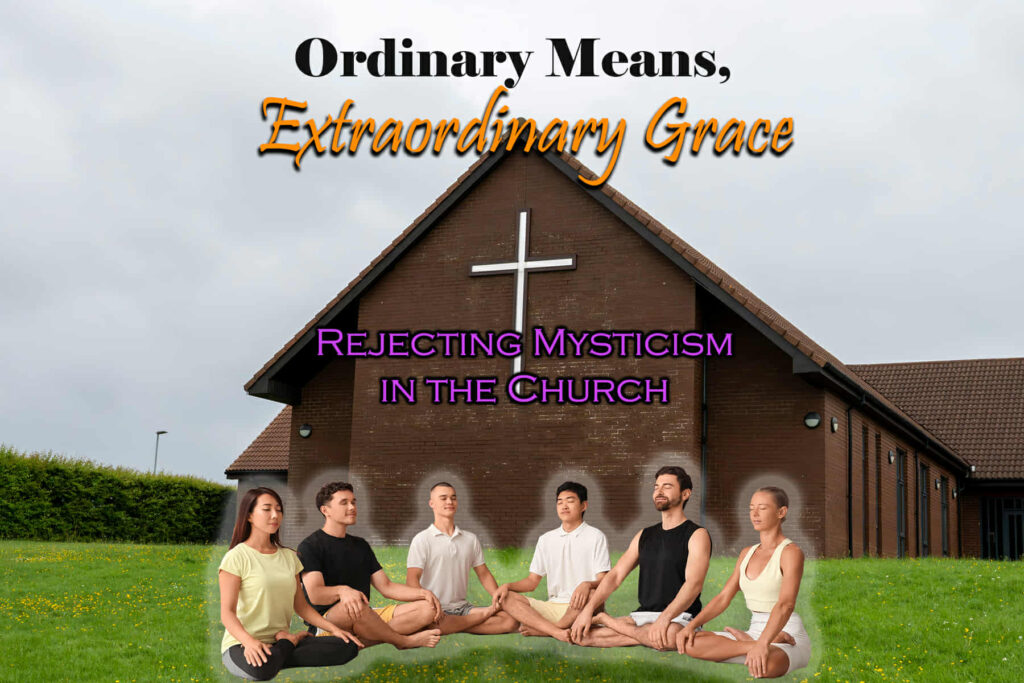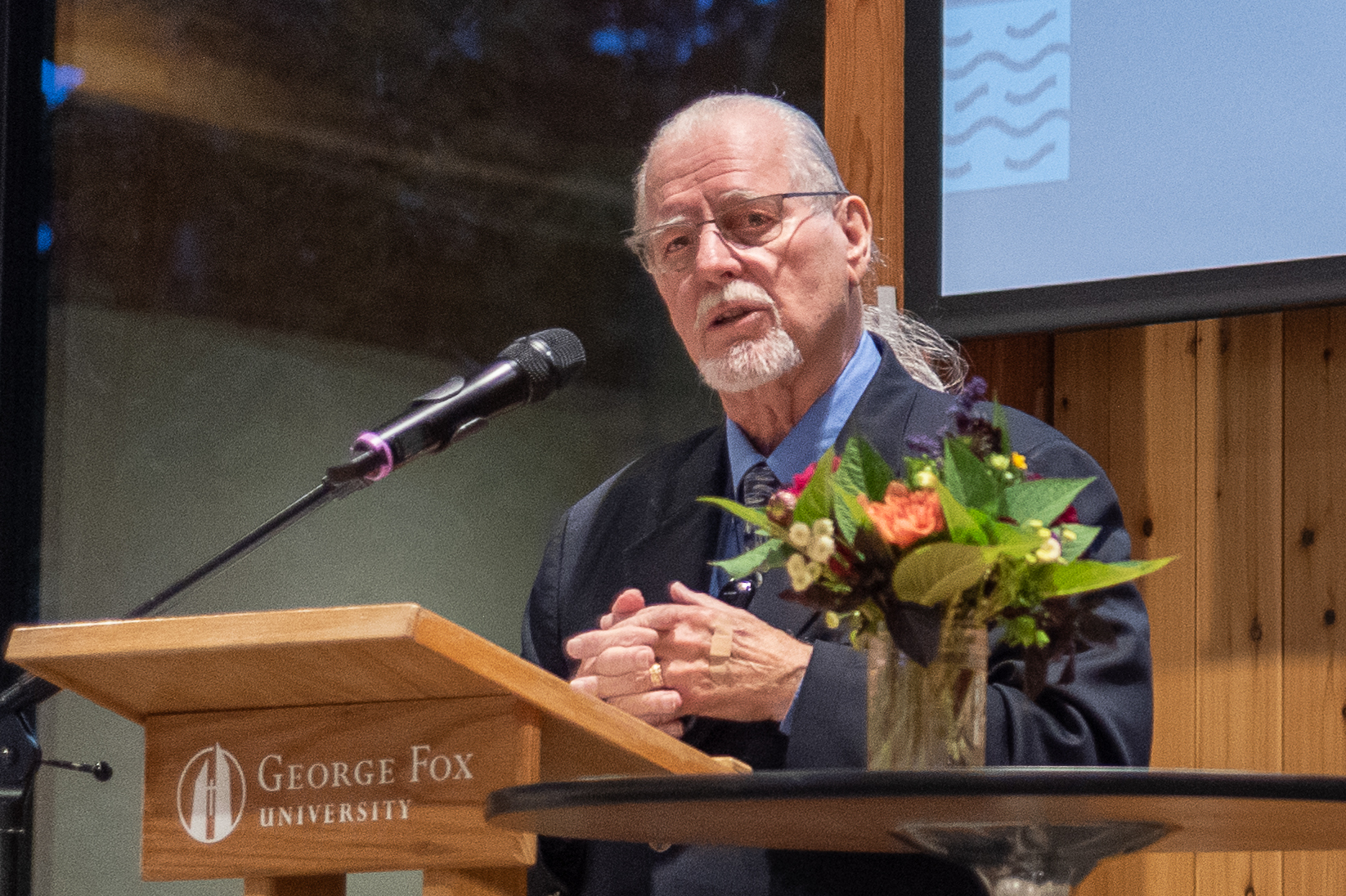⏱️ Estimated Reading Time: 13 min read
Contemplative Spirituality: Is it Biblical?
By Marcia Montenegro
Fall 2025 | Theology for Life
“Contemplative Spirituality” is a term used to include what are called “contemplative practices”, which are also referred to as “Spiritual Disciplines”, “Spiritual Formation”, or sometimes “Spiritual Practices”. In some cases, the use of such terms may not refer to contemplative practices (such as the use of the term “spiritual disciplines”, which is commonly and historically been used to describe practices such as studying the Word or praying), but the Christian must be discerning when reviewing such uses of these terms.
The origins of Contemplative Spirituality stem from several sources and include early monastic practices; Roman Catholic and Eastern Orthodox mystics; the Roman Catholic monk, Thomas Merton; the late Trappist monks, Thomas Keating, Basil Pennington, and William Meninger, who started the modern “Centering Prayer” movement in the 1970s; the late Dallas Willard; and author of the popular book, Celebration of Discipline, Richard Foster.
Some of these men were familiar with and endorsed the practices of Hindu and Buddhist meditation. Keating and his colleagues purposefully included meditation methods from Buddhism and from Transcendental Meditation (T.M.), a Hindu-based meditation taught in the United States by Hindu guru, Maharishi Mahesh Yogi, starting in 1959 (although T.M. did not become popular until the 1970s).
“During Fr. Keating’s term as abbot at St. Joseph’s and in response to the reforms of Vatican II, he invited teachers from the East to the monastery. As a result of this exposure to Eastern spiritual traditions, Fr. Keating and several of the monks at St. Joseph’s were led to develop the modern form of Christian contemplative prayer called Centering Prayer.”
Keating and his team also drew from the fourteenth century anonymous book, The Cloud of Unknowing, believed by historians to have been written by a monk. I read this book; it is very obtuse and teaches that one must let go of thoughts, knowledge, and sensory experiences in order to encounter God in a state of “unknowing”. This is similar to the “beginner’s mind” of Zen Buddhism, which I was involved in during my years in the New Age. The basic idea is that one must erase past knowledge in order to encounter new knowledge, usually viewed as superior.
Contemplative practices got a boost from Quaker mystic, Richard Foster, author of the bestselling and still popular book, Celebration of Discipline, and from philosopher Dallas Willard, who had written a book in 1984 on how to hear God, In Search of Guidance, later re-titled Hearing God. Foster’s organization, Renovare, became instrumental in introducing these practices to evangelicals, along with the popular Be Still DVD, put out by Foster and Willard in 2006.
Eventually “spiritual disciplines” in Roman Catholic and Eastern Orthodox monasteries, as well as the practices and teachings of mystics, such as Julian of Norwich, Teresa of Avila, St. John of the Cross, Catherine of Siena, Hildegard of Bingen, and others, became incorporated into the broader field of Contemplative practices. There are numerous contemporary books teaching these practices.
A Deeper Look at Contemplative Spirituality
Although these teachings include some biblical truth, those become swallowed by the Contemplative concepts. The major concerns are that these practices are not based on Scripture, and they stem from mysticism.
There are different definitions given for mysticism, but mysticism is the attempt to have unmediated contact with the Divine or ultimate reality in order to have union with the Divine. There is belief in other realities that cannot be perceived by thought or by the senses, or expressed in words, and in these realities, one encounters the Divine (or God).
The methods to bring this about usually involve meditation, chanting, repetitive movements, or other practices that put one’s mind in an altered state. An altered state is a conscious, but non-thinking, suggestible state (it is the same as a light trance or light hypnotic state). The mind is in neutral, and critical thinking and judgment are suspended.
Another aspect of mysticism, aside from altered states, is putting a priority on spiritual inner experiences that cannot be communicated in words. These experiences are viewed as having higher worth than anything in verbal form (written or spoken) and are considered to be superior to reason or using the mind (this view exists also in the New Age). Therefore, it is commonplace to find Contemplative teachers placing experiences above reading or knowing the Bible, though this is not always overtly stated.
Contemplative Practices
Some of the Contemplative Practices include Lectio Divina (sacred reading); Visio Divina (contemplating nature or an object of art for spiritual insight or to hear from God); Spiritual Direction, which is allegedly helping someone “hear” what the Holy Spirit or God might be saying to them; Imaginative Prayer (usually visualizing Jesus speaking to you or doing something with you); and specific “disciplines” such as the practices of silence, stillness, solitude, fasting, Sabbath, and others (which will be further explained in the next section).
The Misappropriation of Biblical Practices
Many Christians hear or read terms from Contemplative teachers such as “silence”, “stillness”, “meditation”, or “centering” and assume they are biblical. How are these terms used in Contemplative Practices and what should one be aware of?
The practice of Contemplative Silence is not just being quiet. It involves being still and in solitude in order to “hear” or experience God through the silence. One is told to breathe slowly in a certain way. In fact, breathing slowly is always recommended for most of these practices. Some Contemplatives teach that one will “hear” God within, and they base this on “the still, small voice” of 1st Kings 19. Having thoughts or being busy is viewed as a barrier to hearing or experiencing God.
Contemplative Prayer, as taught by Contemplatives, is similar to Eastern meditation methods, which involves certain forms of breathing, being still, and closing one’s eyes. These techniques are done to still the mind and to discard thoughts. It is taught that this non-verbal stillness and silence is the best way to encounter God and to feel His presence and/or love, and is superior to verbal prayer. The silence and solitude are actually states of mind; it is not the same as merely being quiet or being alone.
Lectio Divina, or “Sacred reading”, involves reading a passage slowly several times and noticing a word or phrase that seems to resonate with you. The reader is to repeat and ponder this word, viewing it as a private message from God. The passage is not read in context and there is no attempt to study or ponder the passage for its meaning. This is supposedly a way to experience God’s word more intimately.
The False Distinction
The so-called disciplines of silence, solitude, being still, and others always involve getting into a state that discourages thinking or study. A false distinction is made between head (or mind) and heart, with the heart (feelings) being emphasized.
Contemplatives typically imply that the Bible is insufficient, dry, or too “intellectual”, and that one is therefore missing out on a deeper experience of God. It is taught that one cannot have true intimacy with God without these spiritual disciplines of silence, stillness, and solitude.
Jesus is said to have practiced these disciplines. However, references to Jesus going off alone in the wilderness do not support a discipline of Contemplative silence or solitude. Jesus went to pray alone or to be alone since he was often surrounded by crowds and always with the disciples. These actions by Jesus are normal and do not indicate any specific practices or disciplines.
Contemplatives frame the issue as the “Western church” being too “head-oriented” and too focused on theology and doctrine, thus being ignorant of the practices which allow one to know God on a deeper level with what they term “the heart.” What they are referring to are the mystical practices of monasteries, mystics, and even practices found in other religions or in pagan beliefs.
One way the Contemplative movement lures Christians into its teachings is to make Christians, who may feel disillusioned or have had some difficulties, feel that they can have a richer spiritual life and be closer to God through contemplative practices.
Response to the Head vs. Heart Issue
Reading or studying Scripture is not merely intellectual. God’s Word is living and also affects one’s feelings and has a spiritual impact (Hebrews 4:12).
When Jesus said to “love the Lord your God with all your heart, and with all your soul, and with all your mind” (Matthew 22:37), this refers to loving God with your whole being. One cannot love separately with the heart, then with the soul, and then with the mind. God wired humans that so that it all works together. The word translated as “heart” in the Old Testament refers to the will, mind, and emotions of the person—to the whole person.
Misuse of Scripture and Response
Contemplative teachings consistently misuse Scripture by taking it out of context, reading other meanings into it, or misinterpreting it. There are dozens of examples but here are two to consider.
One of the most common misuses is Psalm 46:10 (KJV), “Be still and know that I am God.” This is used to support the teaching that one must be still in mind and body in order to meditate. However, that is not the meaning. This Psalm is a reminder of the sovereignty of God, and verse 10 is more accurately translated as “cease striving” or “stop fighting.”
Another example is the “still, small voice” found in verse 12 of the 1st Kings 19 account of Elijah, who has fled Jezebel. However, there are different ways to interpret the Hebrew. It can also mean a “gentle stirring”, “gentle blowing”, “low whisper”, “gentle breeze”, among other meanings. This sound, whatever it was, is what got Elijah’s attention; but afterwards, God verbally spoke to him (v.13).
Since there are many ways to interpret this phrase, it cannot be used to support a teaching that one should listen for a “still, small voice” from God. Another reason it cannot support any teaching is because this is a narrative, not prescriptive. Moreover, no other biblical passage teaches to listen for such a voice. Elijah was a prophet who heard from God, and this was a unique situation.
Theological and Scriptural Lens
Does contemplative Christianity align with biblical doctrine? First, contemplative practices are nowhere supported in Scripture and when Contemplatives try to do so, they consistently misuse the Bible.
Secondly, the mysticism of contemplative teachings goes against the character of God. Reason and logic reflect God’s character, so any teaching that encourages one to discard reason or thinking is not from God, especially when it is advising that one can be closer to God if not thinking. One Contemplative even stated that when praying, one should not think about God.
Biblical meditation is pondering and reflecting on Scripture. It involves the active use of the mind. Contemplative teachers downgrade thinking and the use of reason, but God’s Word encourages us to be sober-minded and use reason (Psalms 16:7; Proverbs 1:2-9, 18:15, 22:17; Isaiah 1:18; Matthew 22:37; Acts 17:2, 17, 18:4, 19; 1 Corinthians 14:15; 1 Thessalonians 5:6, 8; 2 Timothy 2:17; Hebrews 10:16; James 3:17; 1 Peter 1:13, 4:7). The Bible is written using words, and language is based on logic and reason, which are rooted in the character of God. The New Testament instructs us to be discerning, which requires using the mind. There is no biblical passage that demeans the use of the mind for godly reasoning and judgment.
Third, Contemplatives take Bible passages out of context, read another meaning into it, or twist the meaning. Passages taken out of context lead to all manner of heretical teachings. And eisegesis forces one’s opinion on passages, instead of relying on the meaning provided by the author/context.
The fourth way Contemplative ideas are unbiblical is that they go against the sufficiency of Scripture. They do this by teaching that one can have a closer or superior relationship with God through these extrabiblical methods, and that one should hear God through these methods or have ongoing dialogues with God. These teachings ignore the fact that everything needed to know about God and how to live the Christian life has been given in the Bible and comes from God (2 Timothy 3:16; 1 Peter 1:10-12; 2 Peter 1:21).
Church Culture is Growing More Contemplative
Aside from the perennial popularity of Dallas Willard and Richard Foster, Contemplative teachings and concepts from mysticism are growing through people in the Church, such as John Mark Comer, Ruth Haley Barton, Tyler Staton, Jared Boyd, and numerous others, as well as dozens of Spiritual Formation and Spiritual Direction organizations.
There is an influence from Richard Rohr as well. Although Rohr is a Franciscan friar, he is a follower of Perennial Wisdom and is an influence on Progressive Christianity. Perennial Wisdom holds that there was originally one pure religion from which all the world religions came. By going on a journey within through silence and contemplation, one can encounter this reality and one’s “True Self,” which was always in God. Thus, there is a strong link between Contemplative practices and Perennial Wisdom.
Why Does This Matter?
Introducing Contemplative practices into the Church—Spiritual Disciplines (see the note at the beginning of this article), Spiritual Formation, or even Contemplative Prayer and Lectio Divina alone, is introducing doctrines that are not only not supported in God’s Word but work against it. The gospel is never highlighted—and sometimes not even mentioned—in Contemplative material and Scripture is misused.
Another danger is that one may experience a false peace through these practices, which may be so alluring that regular Bible study and prayer are neglected. One might think they are hearing from God outside of Scripture and come to prefer that over the Bible itself. Experiences are addictive and lead only to a further desire for them.
The outcome from Contemplative teachings, since they are not grounded in God’s truth, can only be harmful to the Church and to a Christian’s relationship with God.
“[H]aving been firmly rooted and now being built up in Him and established in your faith, just as you were instructed, and overflowing with gratitude. See to it that no one takes you captive through philosophy and empty deception, according to the tradition of men, according to the elementary principles of the world, rather than according to Christ. For in Him all the fullness of Deity dwells in bodily form…” (Colossians 2:7-9; NAS).
This article appears in the Fall 2025 Issue of Theology for Life Magazine, exploring “The Means of Grace.”
Related CANA articles:

Ordinary Means, Extraordinary Grace: Rejecting Mysticism in the Church
Marcia Montenegro was a professional astrologer who believed and practiced many New Age/Eastern beliefs before receiving Christ as her personal Savior. She began a website called Christian Answers for the New Age to help Christians better understand the dangers of New Age/Eastern beliefs and how they are making inroads into the church and Christian community.




